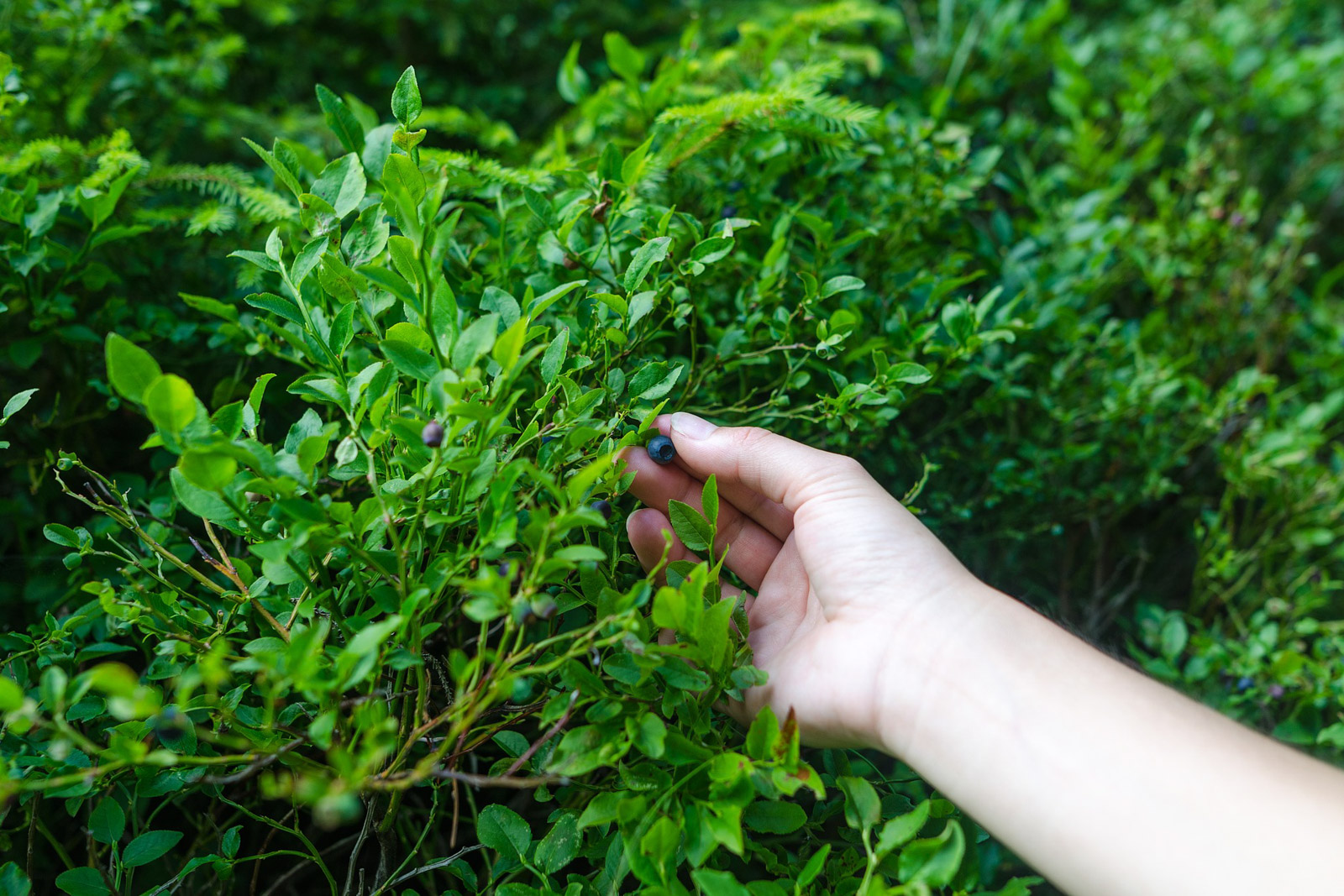If you grew up in or around Vancouver, you may be familiar with the ritual of snagging a few low-hanging huckleberries along a hiking trail and then running to catch up with your family. They are part of the collage of flavours specific to the West Coast: one tangy berry can instantly bring you back to a childhood camping trip or playing in a freezing creek, toes turning blue.
The true identity of the huckleberry is a rather baffling issue. Huckleberry is a regional name now commonly used in North America for a number of closely related plants bearing small blue berries, but that does not include blueberries themselves. It got its name after being mistaken for the whortleberry or hurtleberry (also known as the bilberry or European blueberry). Huckleberries, however, have their own distinctive taste—they start sour and end with a sweet tang—and have a thicker skin and slightly larger seeds. There isn’t yet a way to cultivate huckleberries for commercial agricultural production; they transplant poorly from the wild and take a number of years to mature and produce fruit. Harvesting them is also labour intensive, as they have to be handpicked.
But, for one, huckleberries are a perfect food to forage because in the wild they are so abundant and easy to pick. The tenets are simple: always leave much more than you take, and never pull roots or bushes out of the ground, which would prevent regrowth. Be mindful that you are sharing the berries (and any other edibles you find) with a larger ecosystem—they’re a popular snack for bears, birds, and other animals.
Travel just beyond Lynn Canyon in North Vancouver, stop along the highway en route to Whistler, or venture into the woods near Jericho Beach or UBC to harvest some of these gems. The trick is to go just off the beaten path, off roadways, or—with permission—an empty lot or field that doesn’t see a lot of traffic. Be aware of where your berries are growing; next to a busy road means they will most likely be covered in smog and debris. Berries found deeper in the forest, washed by rain, will yield a better taste.
Wild foraging offers you the hush of the forest, the slow, steadiness of the life there, and the specific, muted soundtrack of the woods as an additional reward to your bounty. “Huckleberries have such a unique West Coast flavour,” says Eric Pateman, president and founder of Edible Canada (which closed in early 2021 after 15 years in business.) “Their acidity and brightness make them great for use in a demi-glace and as a great sauce for red meat or game, especially venison.” Pateman often attends the farmers’ market in Squamish and says, “There is a little boy who sets up a lemonade stand and sells all the indigenous berries in Ziploc bags: huckleberries, salal, salmonberries, and wild blueberries.” A perfect, prebagged snack.
Chef Chris Whittaker, the former executive chef of Forage, also cooks with huckleberries. “They’re a great local wild product I love using because of their versatility,” he says. “When they are tart, they make a great addition to chutneys and savoury sauces, and when they are beautifully sweet and ripe, they are a great substitution for any recipe you would use blueberries.” Fresh from the bush, mixed with sugar, vanilla, and cream cheese, they make delicious, fresh-tasting tarts.
There is great satisfaction in preparing and eating something that you have harvested yourself, which is a major part of the appeal of wild foraging. And what’s not to love? Whether it’s raw fruit or a pie, huckleberries are delightful. Take time to find the perfect spot, feeling the quiet of the woods, and enjoy the final product, from the earth to your mouth.
This article from our archives was originally published in our Summer 2013 issue, and updated April 22, 2021. Read more about local Food.









